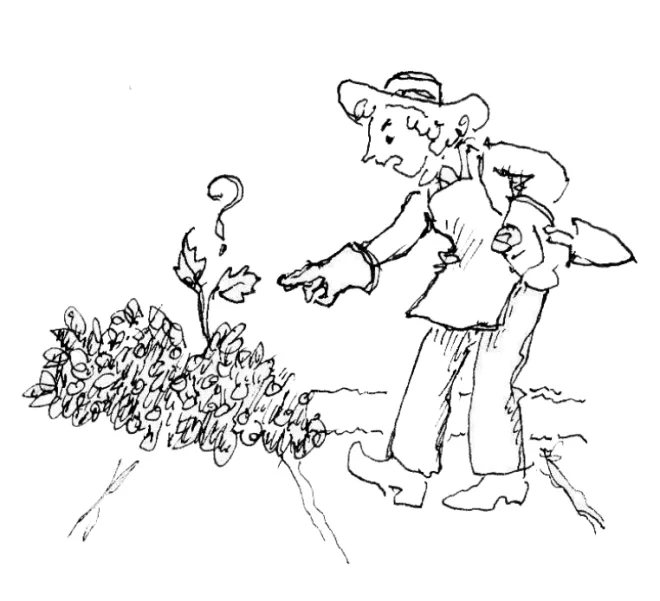Okay, maybe the writer of today’s story could use a Roses for Dummies tutorial. But then we wouldn’t have this enjoyable story about learning some gardening lessons the hard way. But then, we’ve all had our gardening moments, right?
Whether it’s Roses for Dummies or How Not to Overwater Your Ficus, Amanda!, almost every gardener I know has learned a lot from killing a few plants and each of them probably could have used a bit of expert knowledge before taking on a new plant. Like a Ficus. A persnickety Ficus. Some plants (not Ficus) forgive us and do their best to come back (still not Ficus). That’s what happened in another story about asparagus that took four years to grow. And that’s sort of what happened here.
In The Rose That Rose, writer Melody Morrell shares her adventures with a new house in the suburbs with a big yard just waiting to be landscaped with plenty of rose bushes. The problem, however, is that the soil was “terrible—clay with rocks.” But it turns out there’s at least one rose that will forgive you and do it’s best to come back year after year.
As for that Ficus? How about we just say my compost pile is doing quite well.
GreenPrints Has Stories about Lots of Plants, Including Roses For Dummies, Smart People, and Everyone In Between
This story comes from our archive that spans over 30 years and includes more than 130 magazine issues of GreenPrints. I love pieces like these that turn stories into comical moments of laughter, and I hope you enjoy this story as well.

The Rose That Rose
By Melody Morrell

I’ve always wanted to garden. When we married and bought a house in the suburbs with 7 trees in a big backyard, I thought I’d found heaven on earth!
We decided to plant roses in part of the front yard. The soil was terrible—clay with rocks.I didn’t realize we needed to improve it. We dug barely deep-enough holes and crammed in the plants. Most of them died within a few years, except for a Peace and a Fragrant Cloud. They took longer to succumb.
One other rose, close to the sidewalk, died on top, but the rootstock on which it had been grafted did not. It struggled but never expired. At some point I planted the ground cover snow-on-the-mountain (also known as bishop’s weed) next to the sidewalk. It soon spread and surrounded the little rose. Year after year the rose would send up little green stems, only to have them overtaken and buried by the snow-on-the-mountain.
One Spring I stood looking at the hopeless small stems, with their futile headstart on the ground cover, and thought, “People talk to their plants. Maybe I should try it.”
So I directed a very emphatic and, OK, sarcastic message at the little rose: “You know, if you would just grow, you could get above that stuff and have a life!”
Imagine my surprise when, after all those years, the rose did just that. New canes sprouted and grew enough to arch over the snow-on-the-mountain. They even bloomed lovely dark-crimson flowers!
If only my thought power would work—in reverse—on weeds! ❖
By Melody Morrell of Eugene, OR., published originally in 2021, in GreenPrints Issue #126. Illustrated by Marilynne Roach

Let’s hear it! What is your most hilarious story about a plant that came back after you did all you could to kill it? I’d love to read it in the comments.


